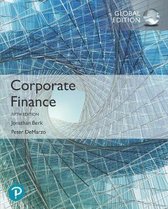Samenvatting
Corporate Finance - Summary - Tilburg university - IBA
- Instelling
- Tilburg University (UVT)
Instagram: ECOsummaries DM me for 20% discount! Summary for the course 'Corporate Finance'. This summary was written in order to study for the final. Everything you need to know is available in this summary. Note: make sure to also study the tutorials. These are as important as the materials dis...
[Meer zien]





